GPCR/G protein

All GPCRs share a common seven trans-membrane structure. GPCRs are associated with heterotrimeric G-proteins which are GTP-binding proteins made of alpha, beta, and gamma subunits. When a ligand binds to GPCR, it activates the attached G-protein, the GDP is replaced with GTP. The activated G-protein then dissociates into an alpha and a beta-gamma complex which activates downstream signaling pathways. These intracellular signaling pathways include cAMP/PKA, calcium/NFAT, phospholipase C, protein tyrosine kinases, MAP kinases, PI-3-kinase, nitric oxide/cGMP, Rho, and JAK/STAT.
GPCRs are one of the most important therapeutic targets for various diseases, over 30% of all modern medicinal drugs target this family. Aberrant GPCR functions are involved in pathological conditions such as neurological, immunological and hormonal disorders. A large number of GPCRs have been identified, but whose ligands are not known, are classified as orphan receptors.
-
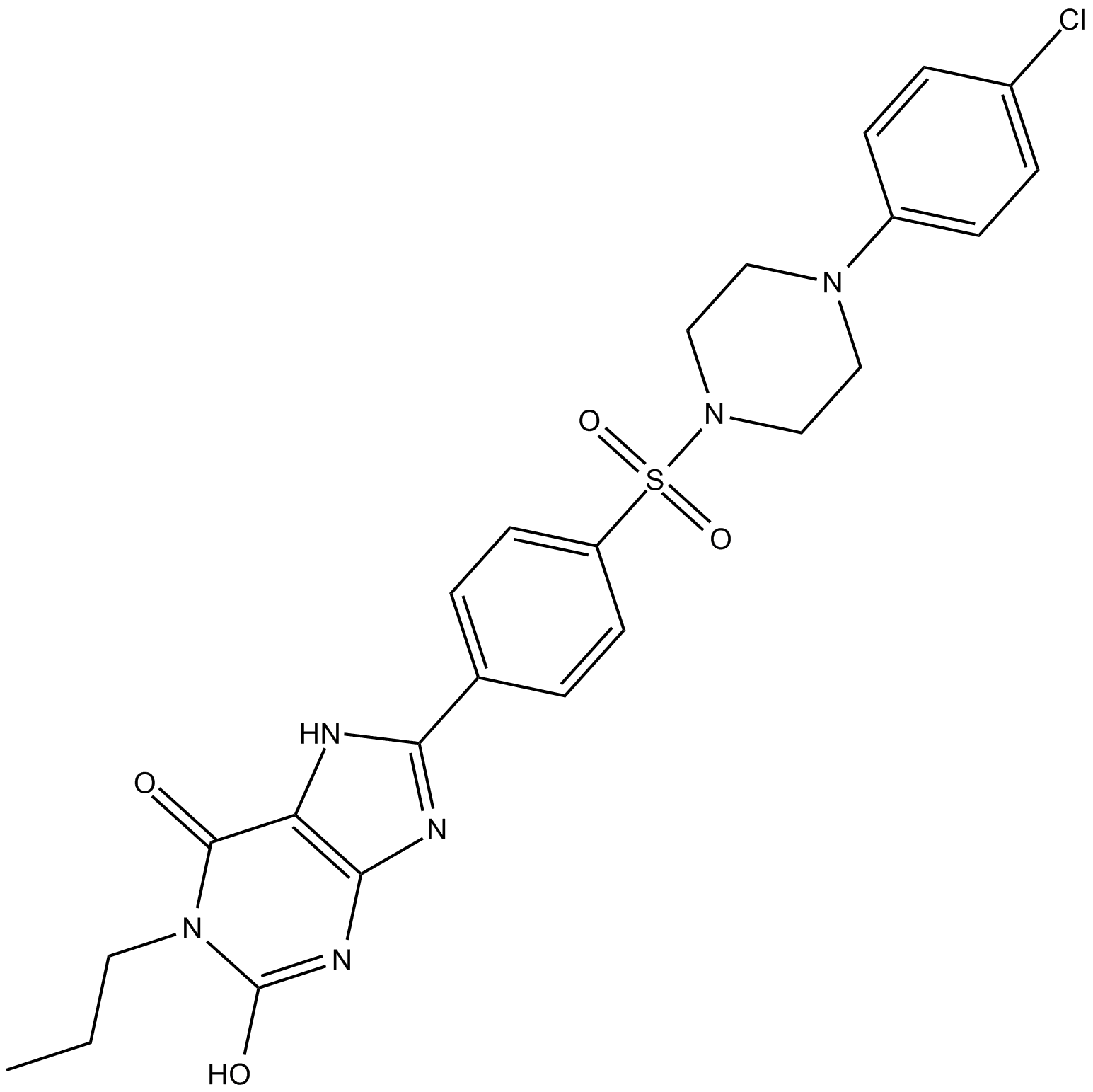 B7312 PSB 603Summary: Adenosine A2B receptor antagonist
B7312 PSB 603Summary: Adenosine A2B receptor antagonist -
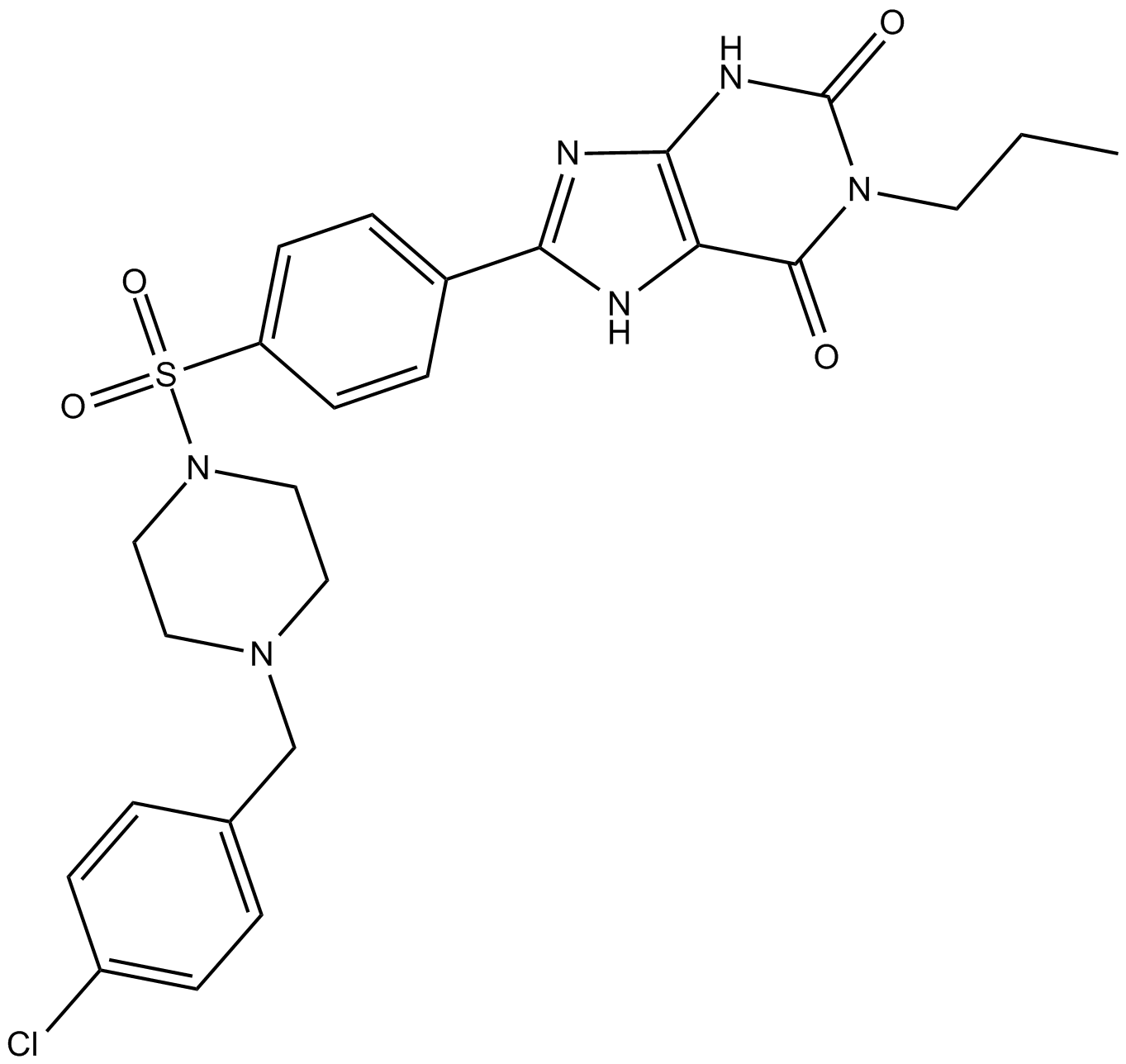 B7313 PSB 0788Summary: adenosine A2B receptor antagonist
B7313 PSB 0788Summary: adenosine A2B receptor antagonist -
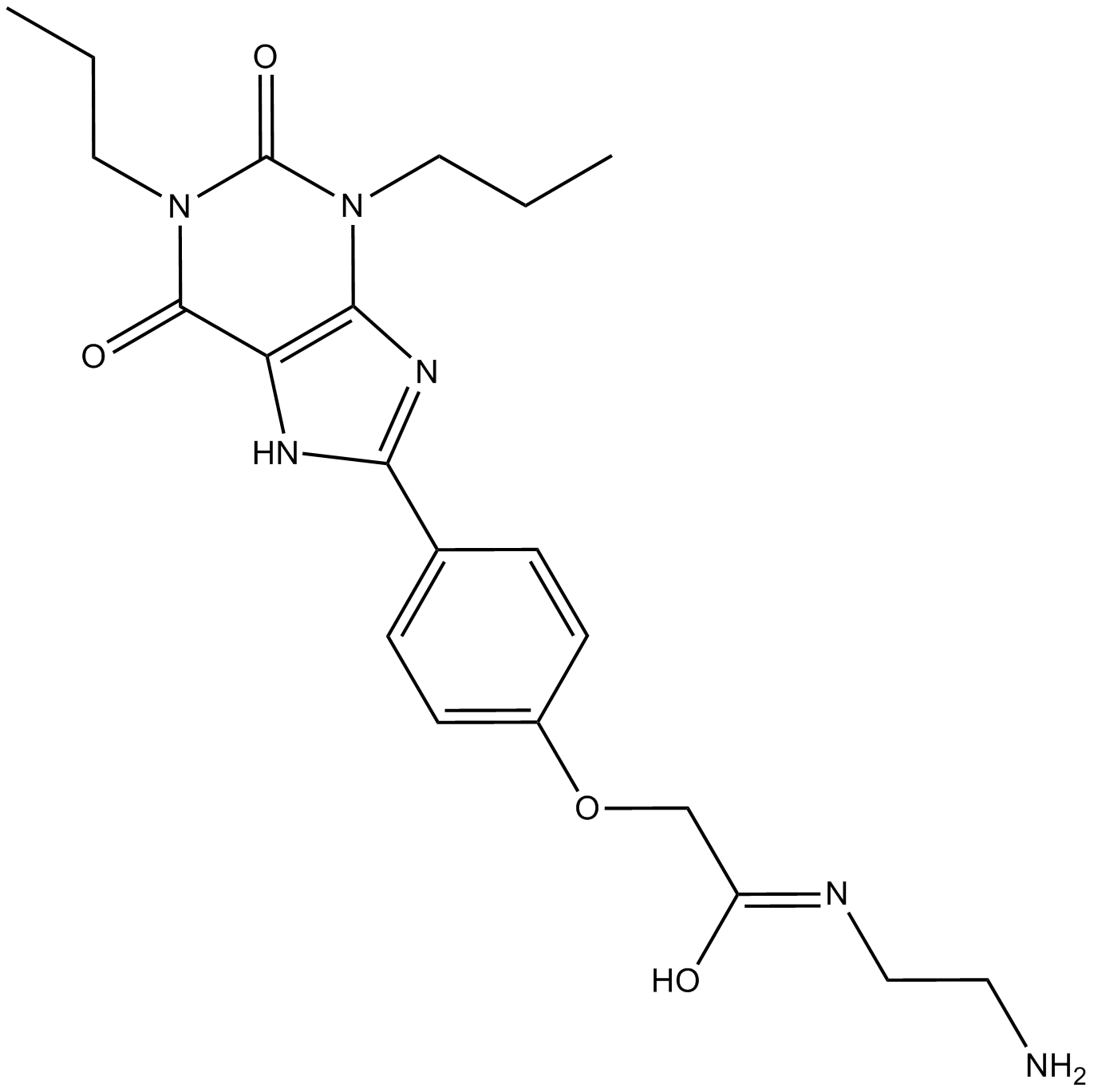 B7314 XACSummary: Adenosine receptor antagonist
B7314 XACSummary: Adenosine receptor antagonist -
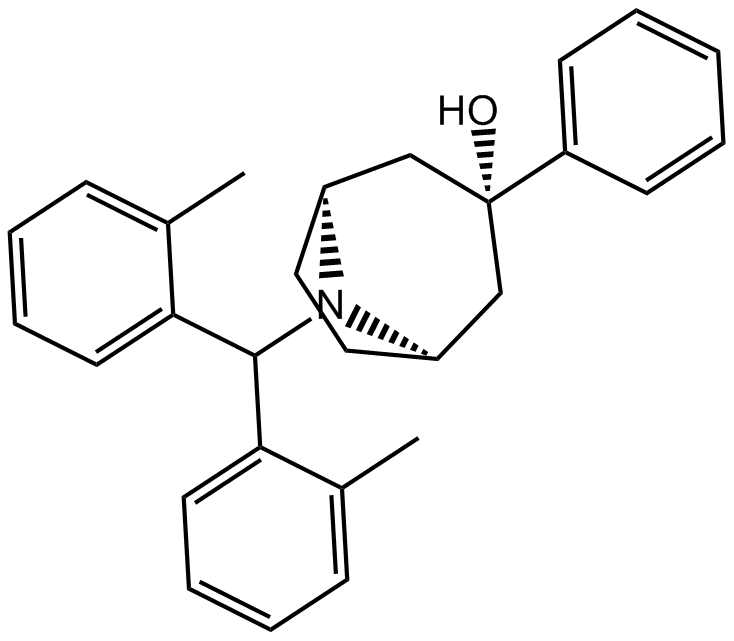 B7326 SCH 221510Summary: nociceptin opioid receptor (NOP) agonist
B7326 SCH 221510Summary: nociceptin opioid receptor (NOP) agonist -
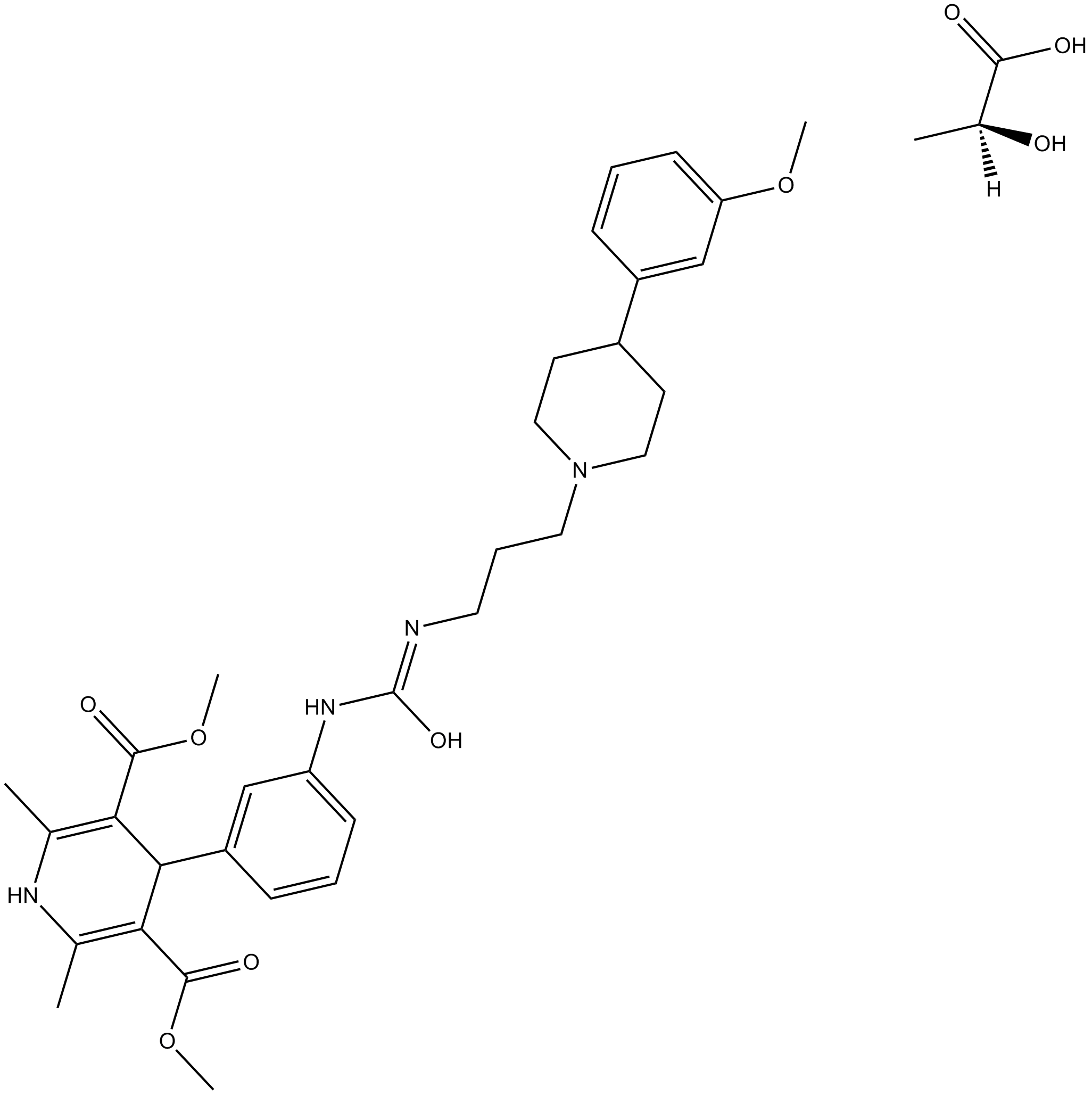 B7327 BMS 193885Summary: Competitive NPY Y1 receptor antagonist
B7327 BMS 193885Summary: Competitive NPY Y1 receptor antagonist -
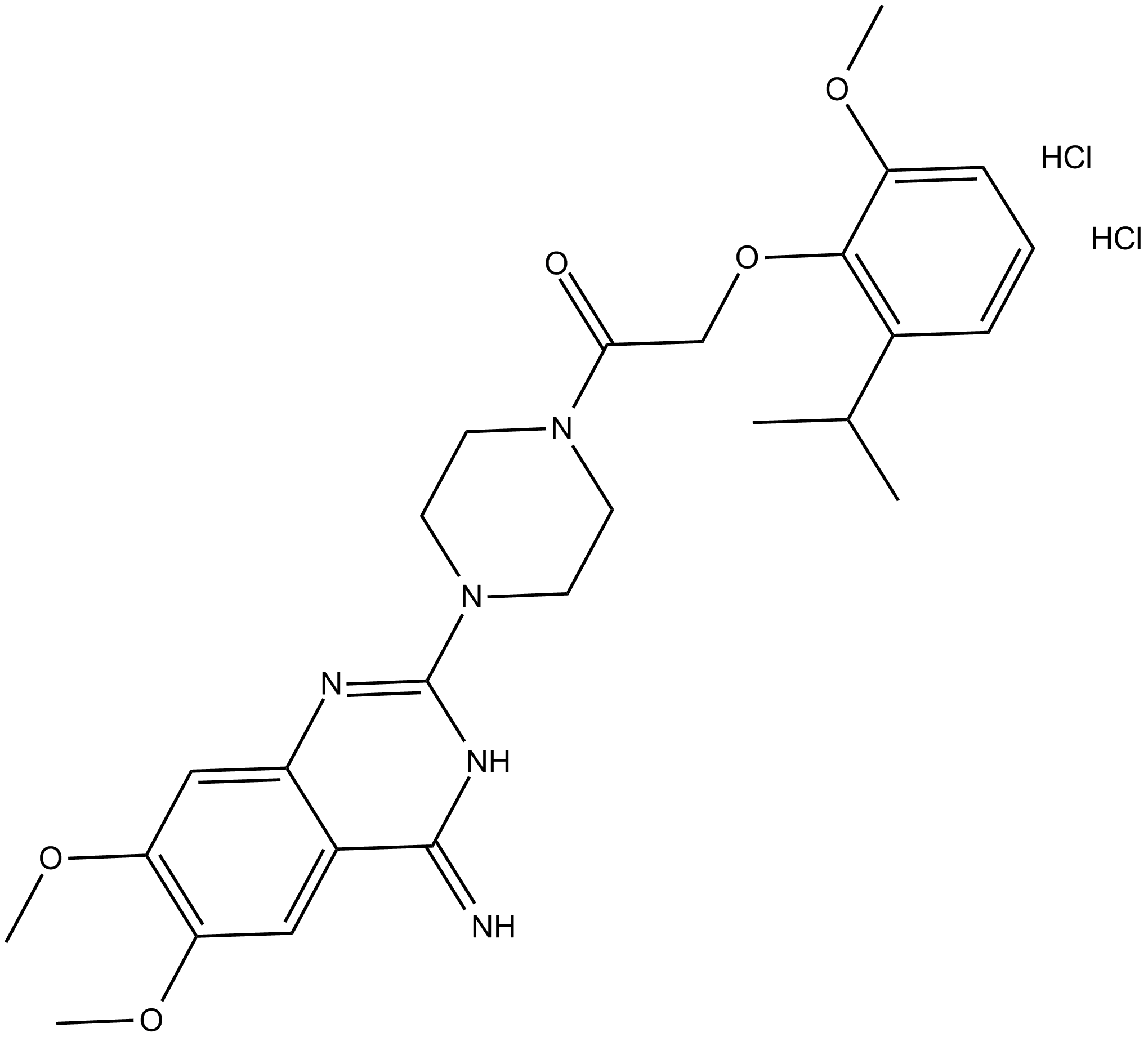 B7343 Rec 15/2615 dihydrochlorideSummary: α1B-adrenoceptor antagonist
B7343 Rec 15/2615 dihydrochlorideSummary: α1B-adrenoceptor antagonist -
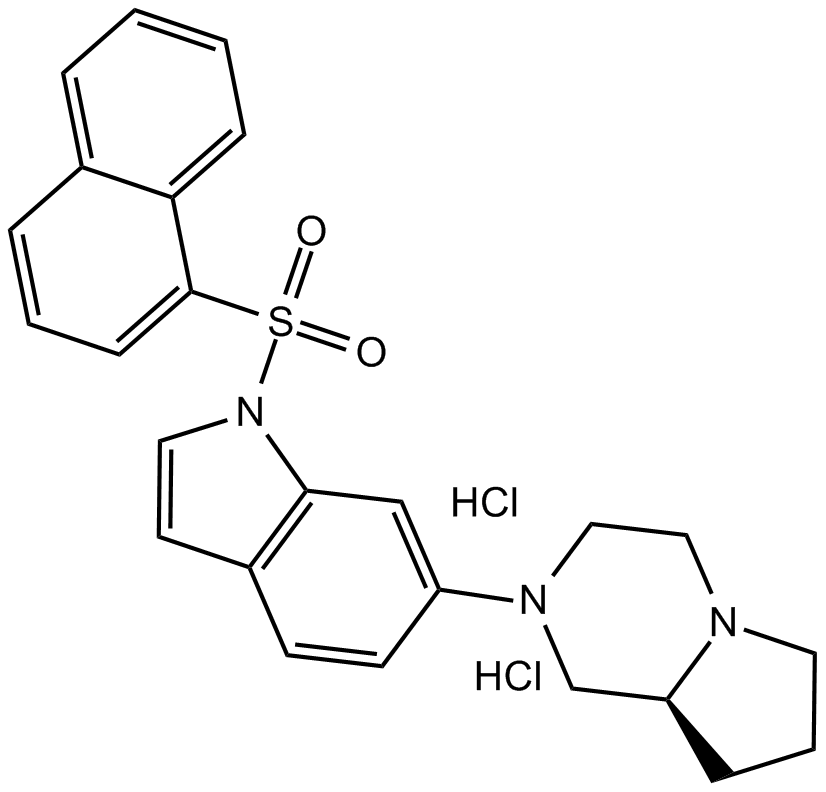 B7344 NPS ALX Compound 4a dihydrochlorideSummary: 5-HT6 antagonist
B7344 NPS ALX Compound 4a dihydrochlorideSummary: 5-HT6 antagonist -
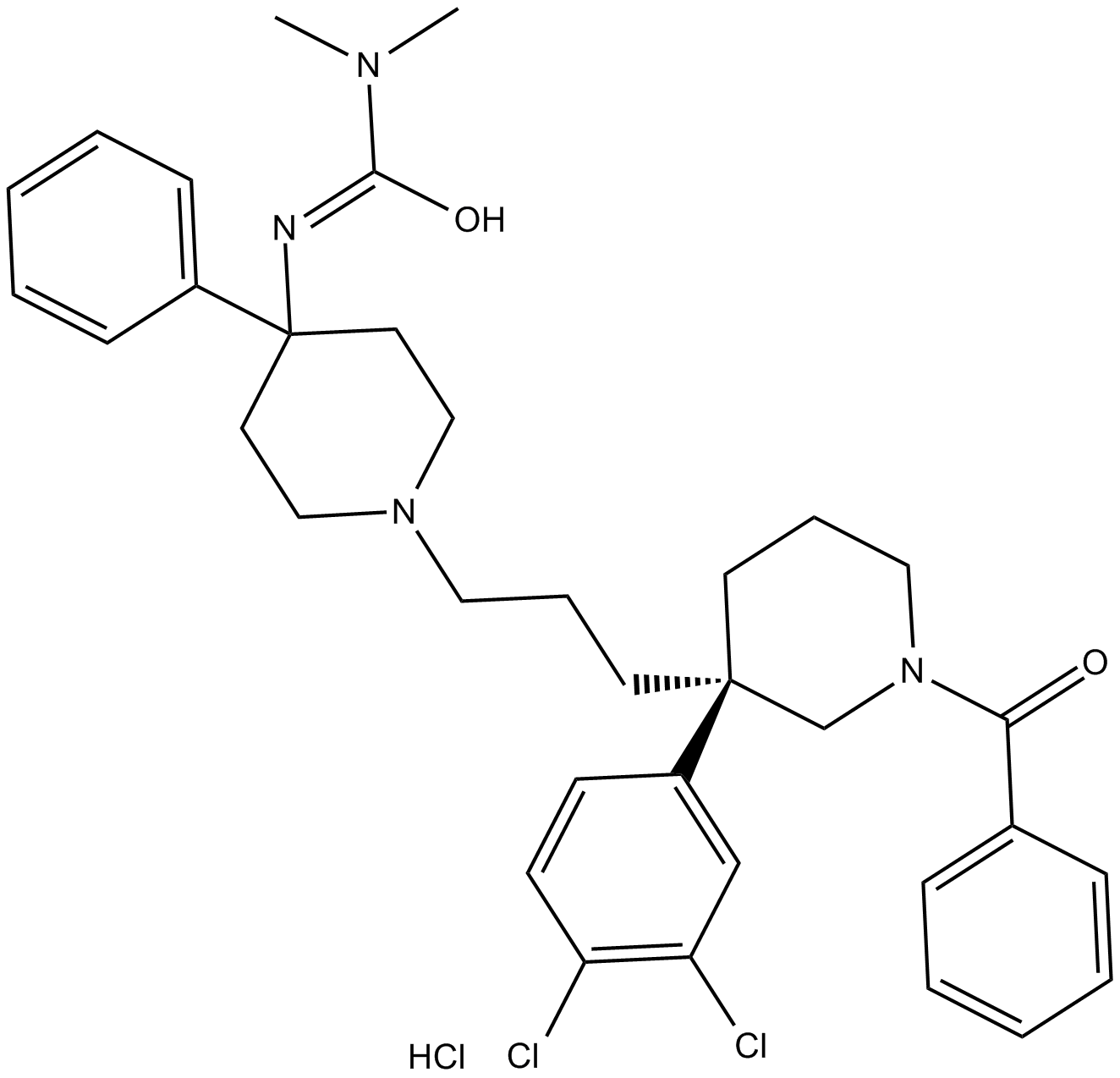 B7350 SSR 146977 hydrochlorideSummary: NK3 receptor antagonist
B7350 SSR 146977 hydrochlorideSummary: NK3 receptor antagonist -
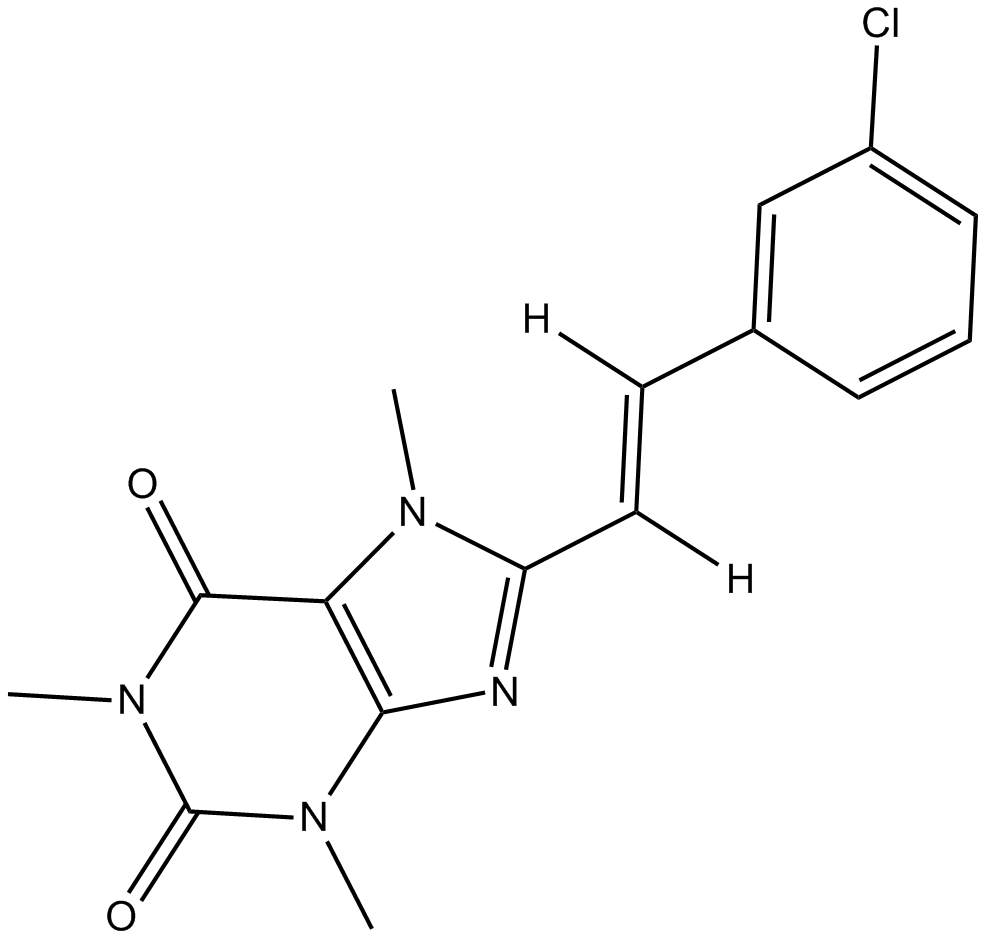 B7355 8-(3-Chlorostyryl)caffeineSummary: adenosine A2A receptor antagonist and MAO-B inhibitor
B7355 8-(3-Chlorostyryl)caffeineSummary: adenosine A2A receptor antagonist and MAO-B inhibitor -
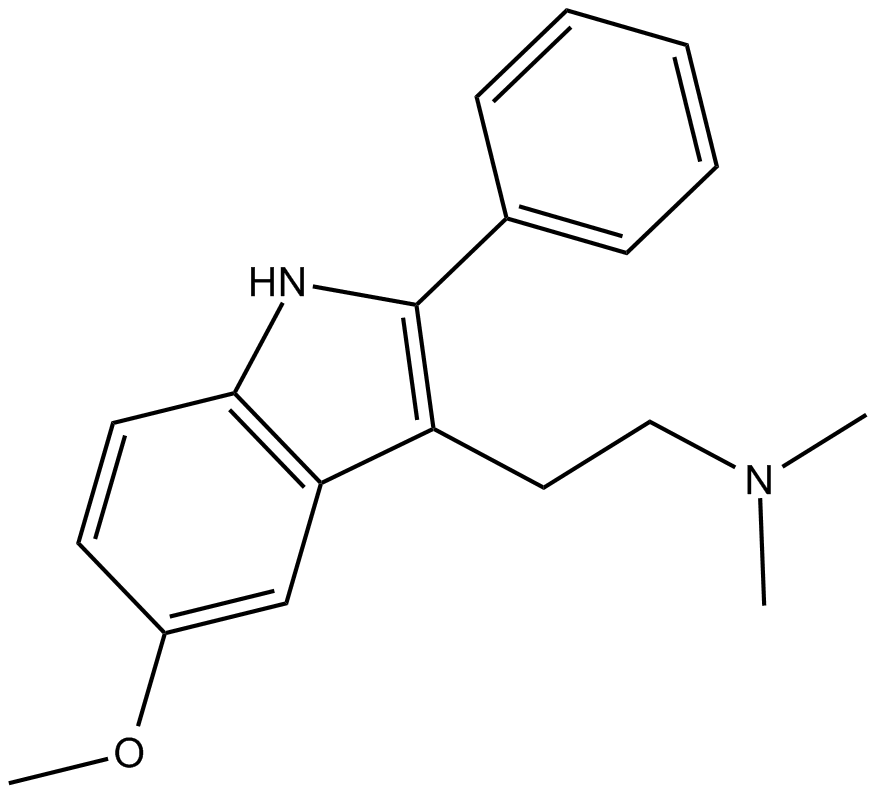 B7366 BGC 20-761Summary: 5-HT6 antagonist,selective and high affinity
B7366 BGC 20-761Summary: 5-HT6 antagonist,selective and high affinity

